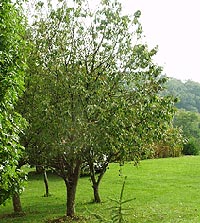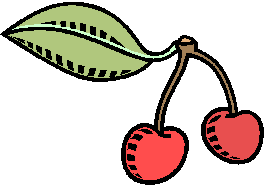Habitat
Prunus cerasus is not known as a wild plant. It is cultivated and often naturalized in parts of Europe, Asia, and North America.
Cultivation History
Prunus cerasus
is a natural
hybridization between P. avium and P. fruticosa.
According to two distinct chlorotypes detected by cpDNA crosses
between P. avium and P. fruticosa have occurred twice. These two species overlap in northern Iran and Turkmenistan.
It was brought to Europe by the Romans and then brought to
America by European settlers. It is cultivated mainly in
Eastern United States. Michigan is the leading producer of
sour cherries. Lake Michigan's influence on winter and
spring temperatures are beneficial.
Top Five countries of sour cherry production:
1) Russia
2) Poland
3) Turkey
4) Germany
5) Iran
Niche
The niche of Prunus cerasus
is greatly affected by humans. Growth can be controlled by
pruning of branches. New trees do not grow on their own,
but rather are planted in certain areas. Trees are planted
in sections 18x24ft rectangular, or up to 25 ft square around.
Other animals such as small mammals
and terrestrial birds may be found in the same niche as sour
cherries. These animals use sour cherries for shelter and
food.
For interactions with other species see
Interactions.

